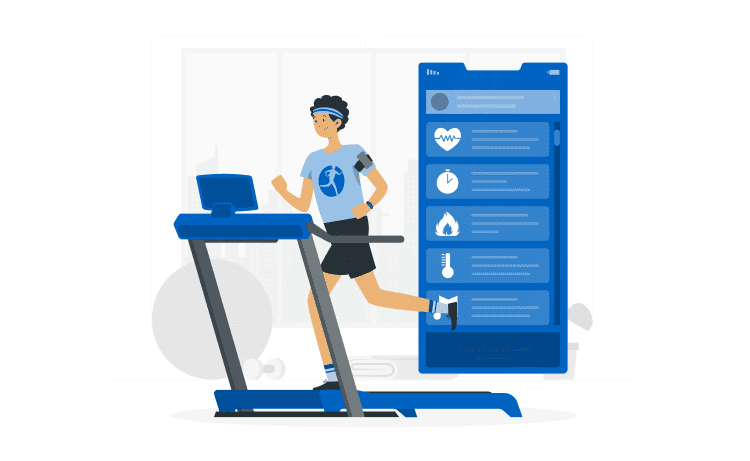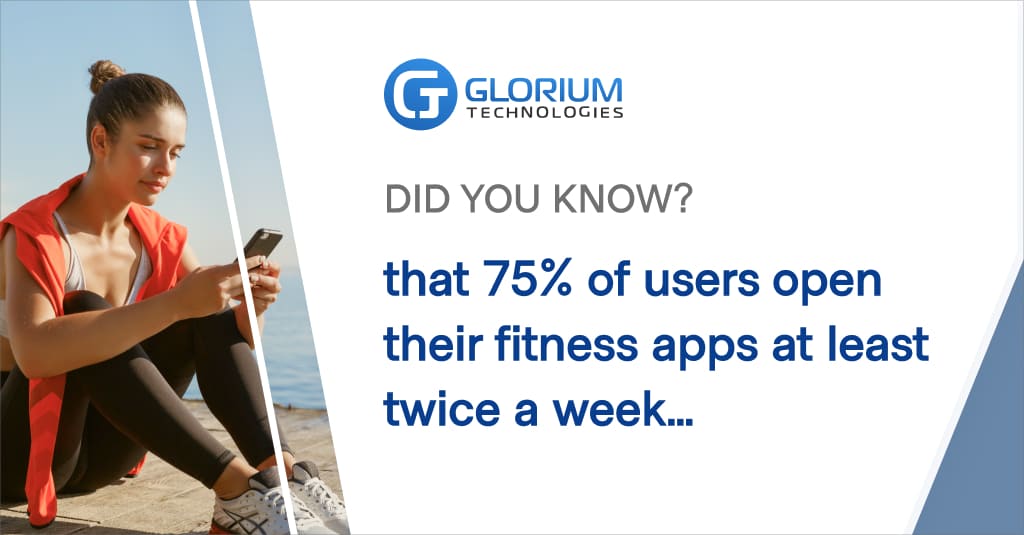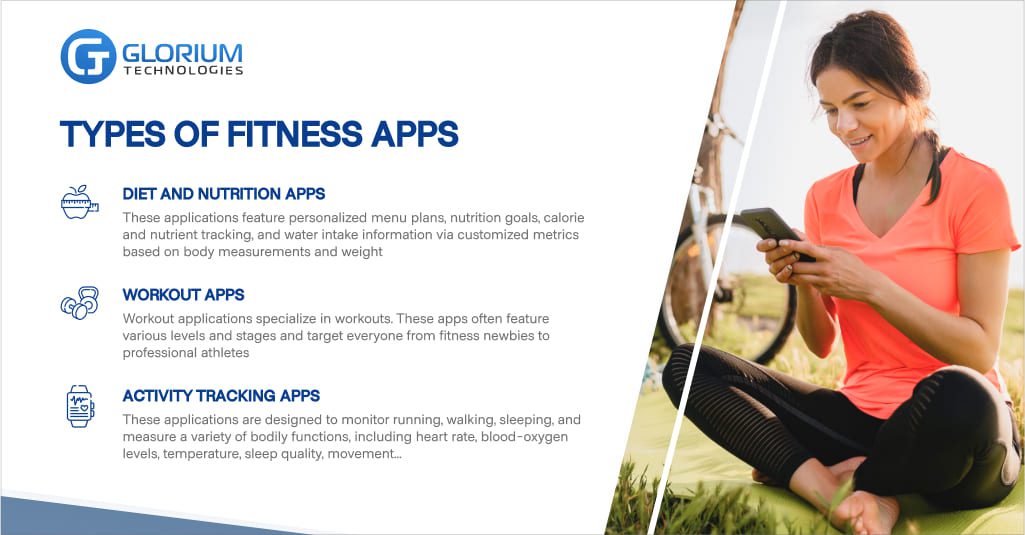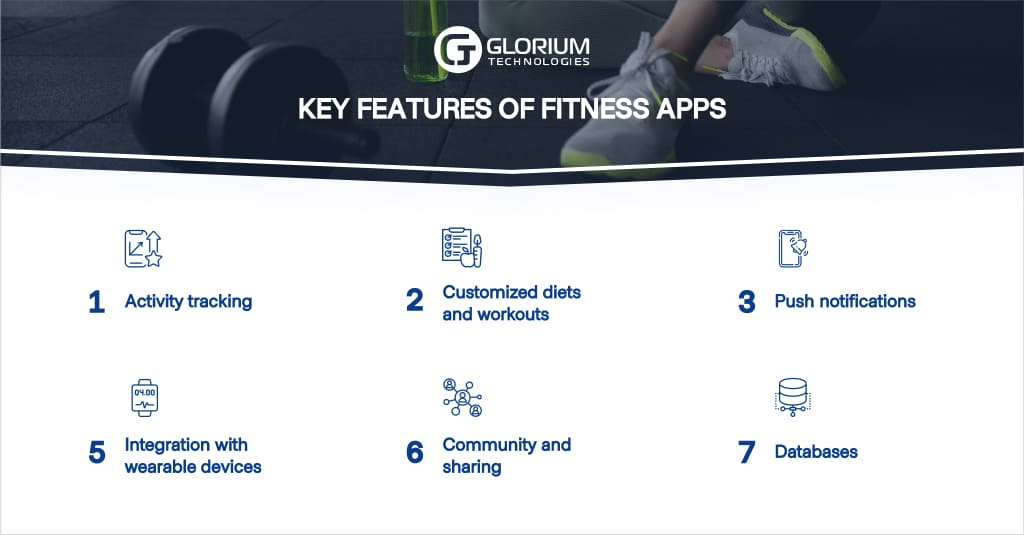
Wellness & Fitness App Development: Features, Solutions and Cost



Although fitness apps have been in high demand for a long time, over the past 18 months, the download rate of workout-related applications has skyrocketed.
Following the physical restrictions in place that have led to the closure of gyms, people from all over the world have taken to various fitness apps to stay on top of their exercise regimes.
As a result, the online fitness industry has been booming. This massive spike in demand for fitness tools means that there has never been a better time than the present to make a splash in this profitable sector.
Content
According to App Annie’s State of Mobile 2021 Report, over 71,000 health and fitness apps were launched globally in 2020.
Though the initial wave of installations has slowly begun to drop as facilities reopen, there is still a steady demand for this type of technology as many users have grown used to managing their own wellbeing from home.
For example, although downloads were down 24% in the first half of 2021, compared to the first half of 2020, user sessions have increased by 31% — year after year.
This is a clear indication that users are becoming more engaged with their applications and that furthermore, this vertical trend is only going to increase in the years to follow.
Flurry Analytics shows that 75% of users open their fitness apps at least twice a week.
The global fitness app market is steadily growing and is estimated to reach $10.5 billion by 2026.

The rapid growth of this niche means that each year fitness apps are becoming more diverse and sophisticated, complete with more unique features to engage users.
Pre-pandemic, most apps only featured pre-recorded video tutorials, however, thanks to steep competition, this is no longer the case.
Presently, people want to be more involved in their health and training. To meet this demand, virtual trainers (human or AI-backed) are now a common staple of many fitness apps.
Virtual and live training sessions provide an enhanced and more engaging user experience. This is especially valuable for those who can’t attend the gym but still wish to be involved with the fitness community.
Additionally, more and more applications now focus on a mixture of fitness and wellbeing as many users are fond of health tracking features and integration with wearable devices.
Essential information, including blood pressure, movement recognition, and body temperature that can be tracked via wristbands or smartwatches is also in high demand.
Personalization isn’t going away any time soon. AI-driven menu plans, workout sessions, and personalized recommendations are expected to be a hot trend in the fitness niche in 2022 and beyond.
The wellness niche is an extremely broad category that encompasses a wide range of fitness applications from dieting-based tools to tailored workout solutions.
That said, there are a few key categories that stand out that can serve as a blueprint for the general market.
Nutrition apps target individuals who tend to focus on dieting as a means of staying in shape.
These applications feature personalized menu plans, nutrition goals, calorie and nutrient tracking, and water intake information via customized metrics based on body measurements and weight.
Many apps even include barcode calorie tracking features complete with massive databases chock-full of nutritional information.
Generally speaking, nutrition apps are designed for one thing — managing eating habits.
The most widely-known apps in this category include MyFintessPal, Lifesum, LoseIt!, Paleo, Harvest, and Waterlogged.
As their name suggests, workout applications specialize in workouts. These apps often feature various levels and stages and target everyone from fitness newbies to professional athletes.
Typically, workout apps include personalized workout routines and keep track of user progress along the way.
Fitness communities are extremely popular within these applications. The most widely used workout apps include Nike Running Club, Jefit, FitOn, and Freeletics among others.
Think of activity trackers as a combination of fitness mixed with healthcare. These applications are designed to monitor specific activities including running, walking, and sleeping.
In addition, these apps measure a variety of bodily functions, including heart rate, blood-oxygen levels, temperature, sleep quality, movement, and much more (depending on the application).
Keep in mind, these apps require a little more attention when it comes to compliance and regulation as they often contain sensitive user information.
The most popular activity tracking apps are Strava, RunKeeper, Google Fit, Sworkit, etc.

Apart from monitoring and measuring activity levels, a reliable fitness app should enable users to create goals and scale their workout plans.
For example, users should be able to monitor the number of steps taken, calories burned, and the amount of sleep they get each night.
As a rule of thumb, apps should be both scalable and customizable. The same rule applies to body measurements as users prefer access to features that can accurately track their progress, whether it’s losing or gaining weight, increasing flexibility, running a few more miles or other valuable goals.
In the modern world, maintaining a healthy diet doesn’t have to be torturous. Similarly, workouts don’t have to consist of boring, one-size-fits-all routines.
Instead, smart algorithms can be used to craft personalized routines that match each user’s goals.
Dieting plans should take into account popular eating habits and preferences to offer suitable menus.
When it comes to workouts, apps should be capable of processing a user’s preferences to better recommend activities that not only result in fitness but also inspire joy.
Alerts and reminders are a great way to engage users; especially if an app utilizes elements of gamification to help users navigate personalized plans.
People are often busy throughout the day. As such, it’s easy to forget about fitness goals at times. Push notifications are a great way to ensure users stay on target.
Reminding users of their achievement via relative insight and analytics is a great way to boost morale.
That said, developers should take caution not to overwhelm and repel users with too many notifications — a few healthy reminders will do the trick.
Contemporary fitness apps go hand in hand with wearable fitness devices. As such, the ability to integrate with external tracking tools cannot be overstated.
Together, an application and its compatible devices create an ecosystem to gather more data and insight into one’s fitness routine, goals, and progress.
Depending on the application type, an app can integrate with any number of wearables and applications.
However, if you have your heart set on an activity tracking app, then integration with wristbands, chips, or smartwatches is critical.
It’s also important to enable integration with Siri or Google Assistant for voice control and enhanced user experience.
Social sharing is extremely important when it comes to fitness. Support and encouragement from a community of like-minded people can greatly boost motivation. That’s why many fitness applications include a community feature, and allow users to share their results on social media.
For many, fitness is an important aspect of life that should be shared with others. Additionally, sharing stats can make things a bit spicier. A bit of friendly competition is always encouraged.
Not only do novices need help; even experienced users need a little guidance along the way.
A vast knowledge base can be extremely helpful when it comes to keeping users on track.
In regard to nutrition apps, having a database complete with product codes, nutritional information, and various recipes is a must-have feature.

The total cost depends on many factors, including a product’s complexity, development time, tech stack, team size, development rates, and more.
The essential phases of fitness app development include technical documentation, design, programming, development, prototyping, maintenance, project management, and quality assurance.
The more complex the app, the more stages will be involved.
The typical app development process is around four months. However, it can take longer depending on the functionality and scale of the application.
The cost of a full-featured fitness app generally starts between $60,000 to $170,000.
Keep in mind, these estimates are very general; it’s better to discuss the price directly with software development providers.
Our team has the expertise and capacity to enhance and/or bring your fitness application to life from scratch.
Whether you’re in need of IT consultation, robust application testing, or assistance with implementing the technology required to enhance your software’s security capabilities, we can help.
With extensive experience developing applications and a profound understanding of critical regulations, there is no challenge that we can’t meet.
Learn more about our software and healthcare application development.
| Cookie | Duration | Description |
|---|---|---|
| cookielawinfo-checkbox-analytics | 11 months | This cookie is set by GDPR Cookie Consent plugin. The cookie is used to store the user consent for the cookies in the category "Analytics". |
| cookielawinfo-checkbox-functional | 11 months | The cookie is set by GDPR cookie consent to record the user consent for the cookies in the category "Functional". |
| cookielawinfo-checkbox-necessary | 11 months | This cookie is set by GDPR Cookie Consent plugin. The cookies is used to store the user consent for the cookies in the category "Necessary". |
| cookielawinfo-checkbox-others | 11 months | This cookie is set by GDPR Cookie Consent plugin. The cookie is used to store the user consent for the cookies in the category "Other. |
| cookielawinfo-checkbox-performance | 11 months | This cookie is set by GDPR Cookie Consent plugin. The cookie is used to store the user consent for the cookies in the category "Performance". |
| viewed_cookie_policy | 11 months | The cookie is set by the GDPR Cookie Consent plugin and is used to store whether or not user has consented to the use of cookies. It does not store any personal data. |